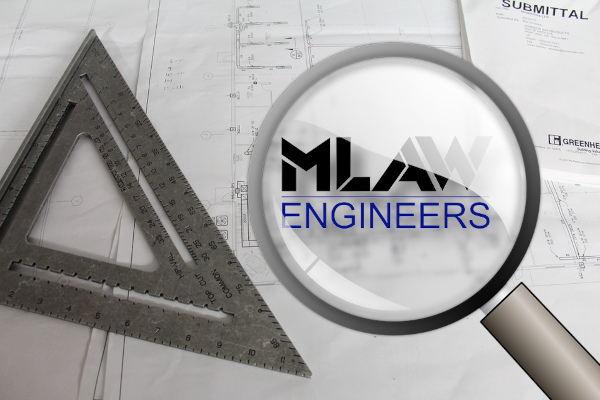Featured Article
Trees are common fixtures around the constructed environment and greatly enhance the livability and value of homes, offices, shopping centers, and other facilities used by man. If you have a shallow soil supported foundation or slab, or other near surface construction such as pavement in conjunction with a high plasticity clay, trees can also be trouble. This trouble can take the form of unexpected bulges in the interior of foundation slabs or loss of support around edges after construction. Trees can be trouble if they are pre-existing and removed during construction or left in place near the edge of the construction. They can also cause trouble if they are planted after construction.
Trees are living organisms and require a great deal of water for their growth and viability. This water is taken out of the ground through the root system. Root systems of trees can be vast and deep, depending on the tree and the geology. The roots will also seek water and can find small breaks in sewer lines to tap the moisture inside. If a tree has been in existence for a long time at a site and is removed during construction, it is possible that a dry bulb or a zone of reduced water content has been left behind within and near the root zone. After construction the suction or drawing of water from the zone has been stopped because the tree is no longer there and natural forces attempt to rebuild the moisture to the levels of the moisture around this zone. As moisture rebuilds in the expansive clays the volume increases, thereby producing unpleasant results for structures established over it. Since the volume primarily increases in the vicinity of the former root dry zone, differential movement results, which can cause damage to pavements and structures.
Trees existing near the edge of shallow foundations or pavements can draw water from under the slab in times of drought and cause a loss of support. Alternatively, the tree root system may maintain a lowered water content (or heightened soil suction condition) while the soil around it is increasing water content due to evaporation cut off. This can be caused by constructing a slab or pavement around the area. The result is the same. There is a depression around the tree root zone and raised soil other places.
If a tree is planted near a structure or pavement after construction in an expansive clay, the soil moisture can be removed and a depressed or dimpled zone occurs that looks very similar to the one described above. The result is the same. Differential support conditions can lead to differential movements, cracking and distress, and failure in the foundation and super-structure system.
The soil suction levels produced by tree roots typically are 4.4 pF to 4.7 pF. At these levels the suction generated in the soil is sufficient to resist and stop the upward flow of water into the tree system. This is also termed the wilting point by agronomists. It has been found by study that 4.5 is a typical number for the soil suction values in the vicinity of a tree. This value extends to the deepest root penetration plus a few feet deeper. For this reason, the depths of roots should be logged in all geotechnical investigations where high plasticity clay is involved. In the writer’s experience very high suction values on the order of 4.5 to 4.6 were found as deep as 17 feet in some parts of Texas and root fibers were found around the same depth. The treatment for the tree condition is as follows:
- If a pre-existing tree is to be removed from under a proposed slab or pavement or within five feet, a considerable depth of the tree zone should be reworked with moisture conditioned soil or water injection. This treatment is to bring the moisture condition up to that of the surrounding soil before construction.
- If a tree is to remain or be planted near the edge of a structure on high plasticity clay soil, special precautions should be taken to bridge the probable loss of support zone. This zone could be taken as approximately equal to the mature crown radius of the tree. In a shallow, stiffened slab foundation additional support can be provided by more and deeper grade beams and stiffener beams.
Kirby T. Meyer, P.E.
MLAW Consultants & Engineers
Originally published in MLAW Newletter, July 2005

Explore
Geological Faults and Foundation Design
Austin and Central Texas abounds with geologic faults, the most prominent of which is the Balcones Fault, or “fault system”. These faults are especially common in a band, which runs north and south through Austin and similar areas in Georgetown, Round Rock, Buda, Kyle, San Marcos, New Braunfels and parts of San Antonio. The band…
Read MoreWhen Should You Stress a Cable Slab?
The question as to when the proper time to apply the stressing force to the post tensioned cable in this type of reinforced foundation is of considerable interest. If you apply the stressing load too soon you have the danger of pulling cable anchorages out of the green concrete. If you wait too long there…
Read More
